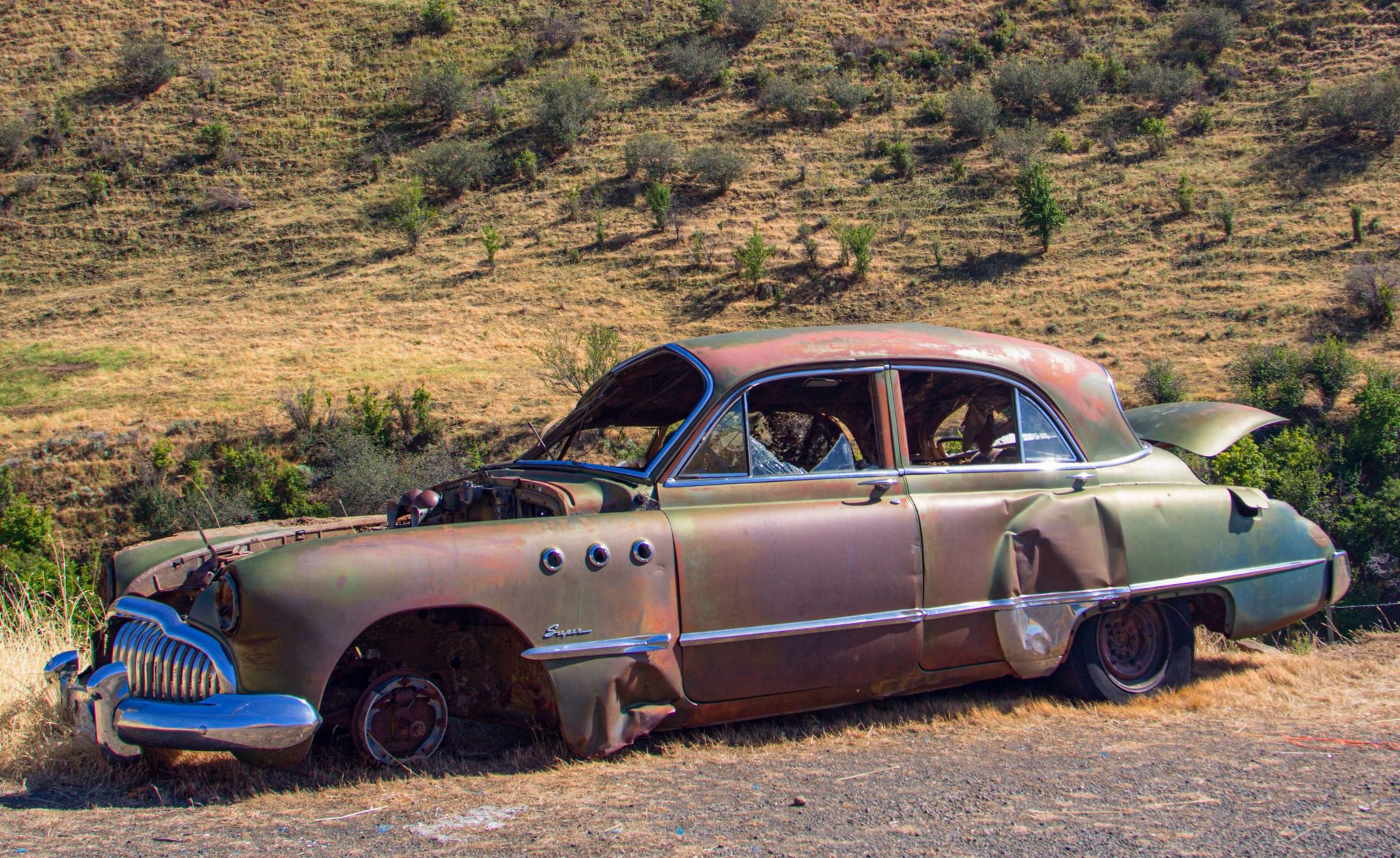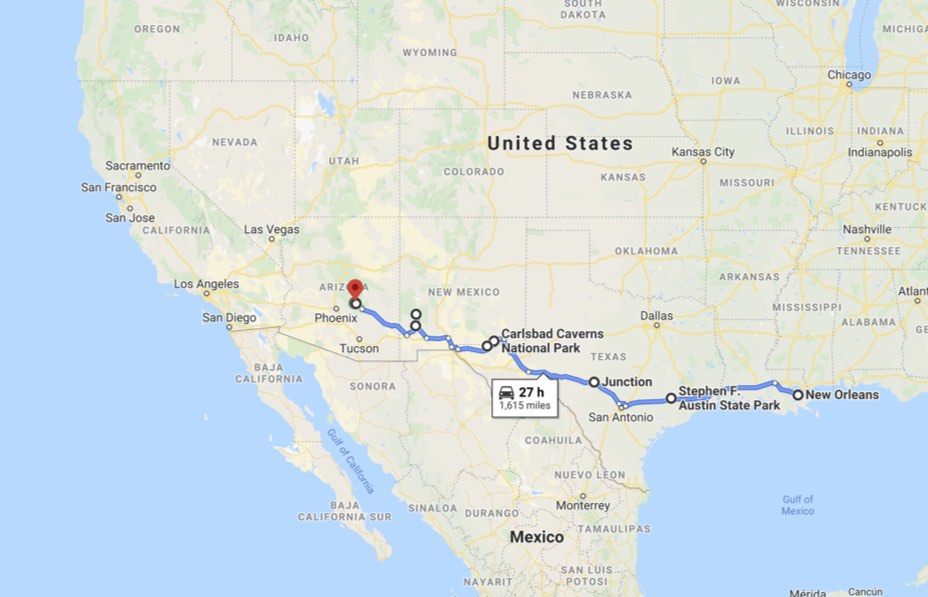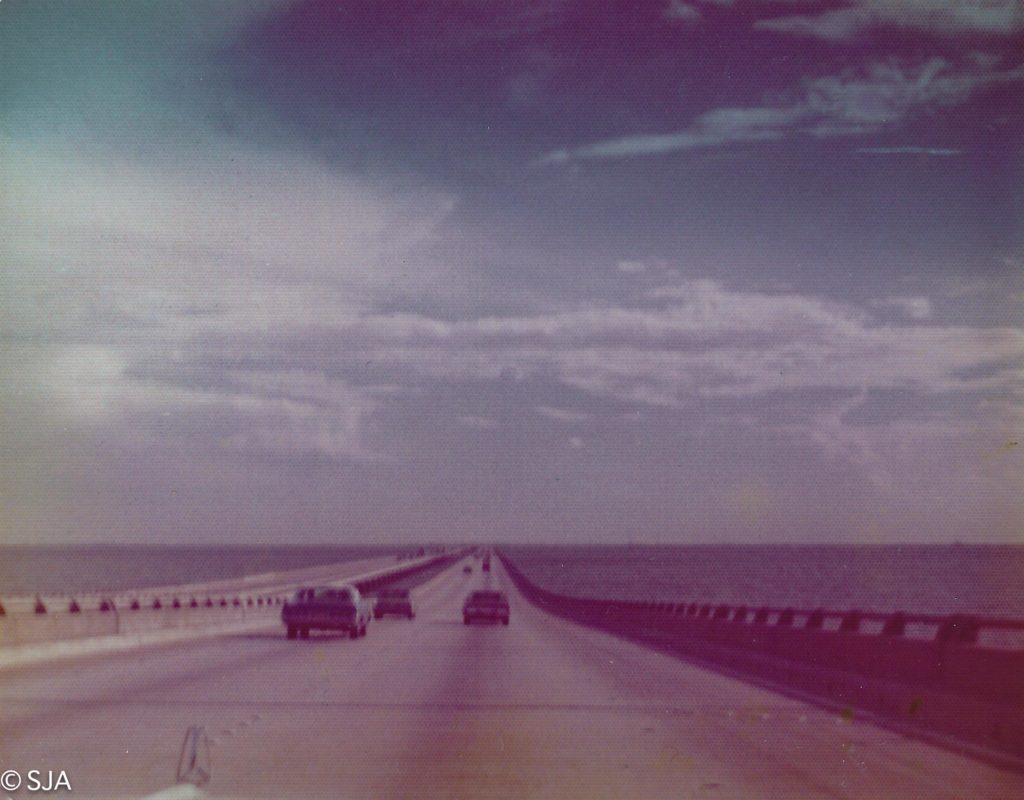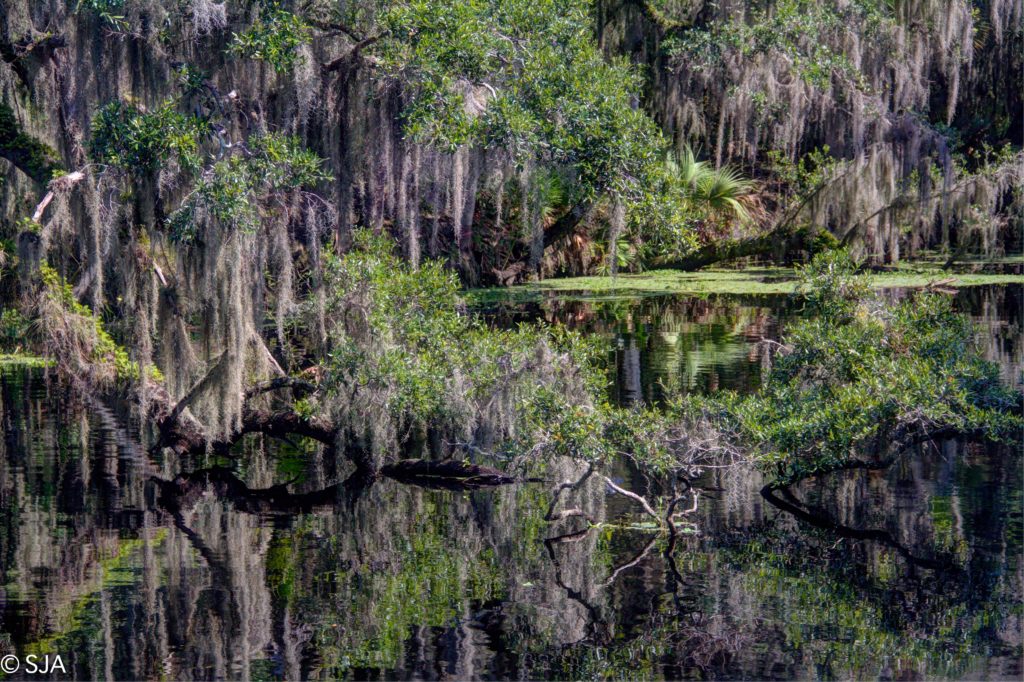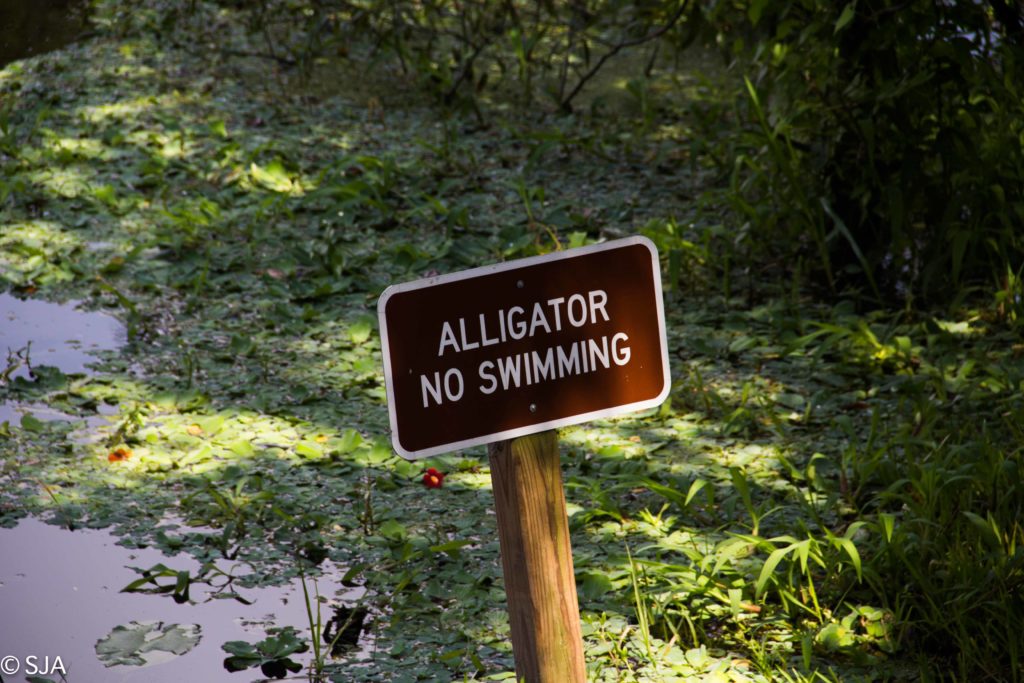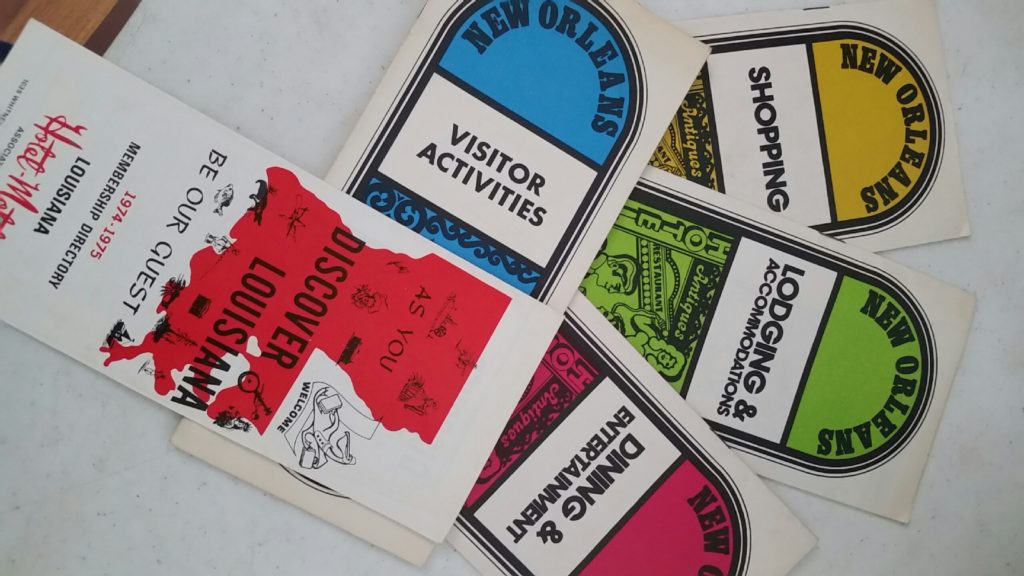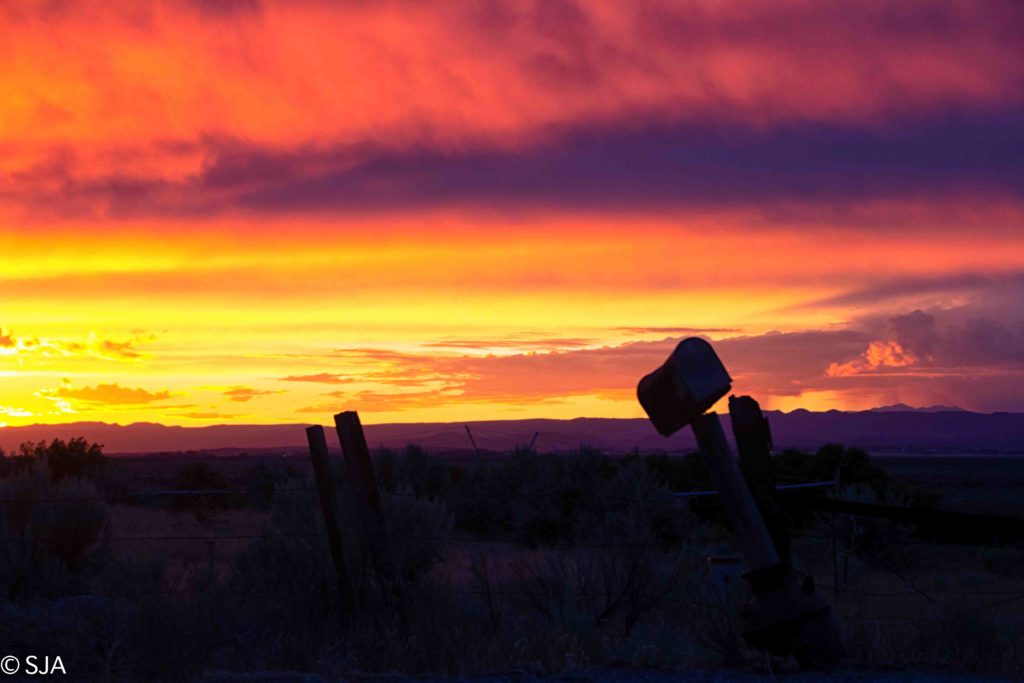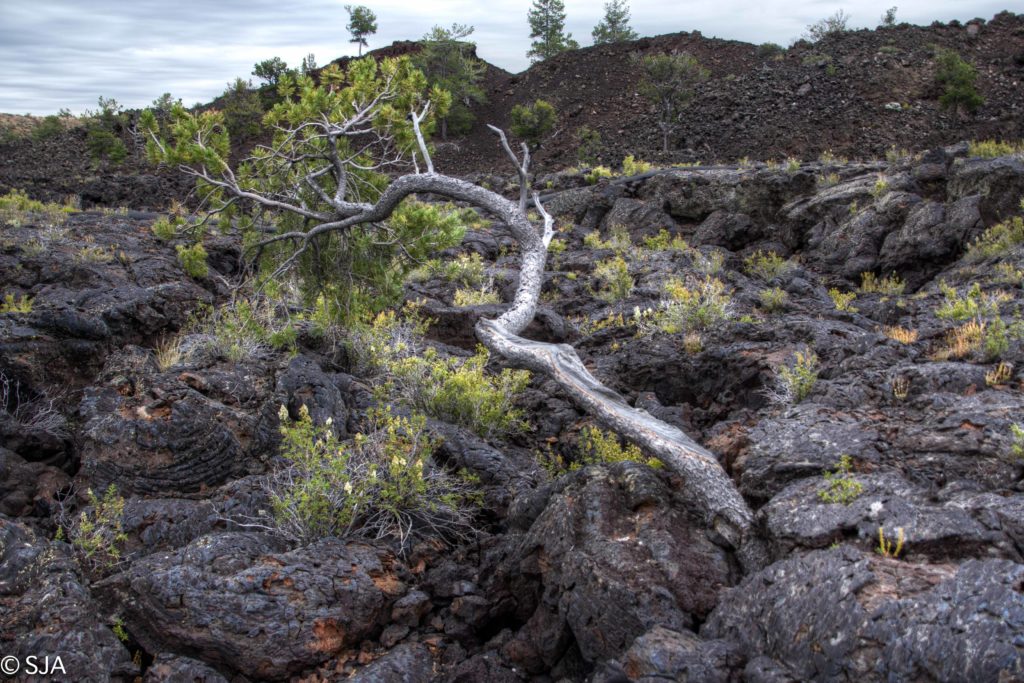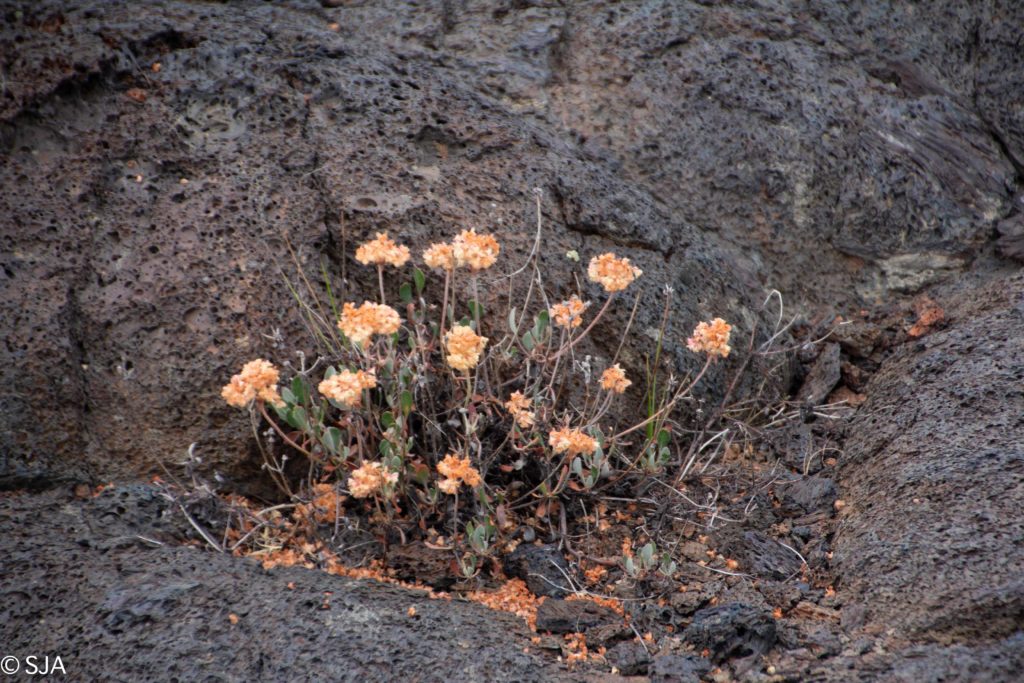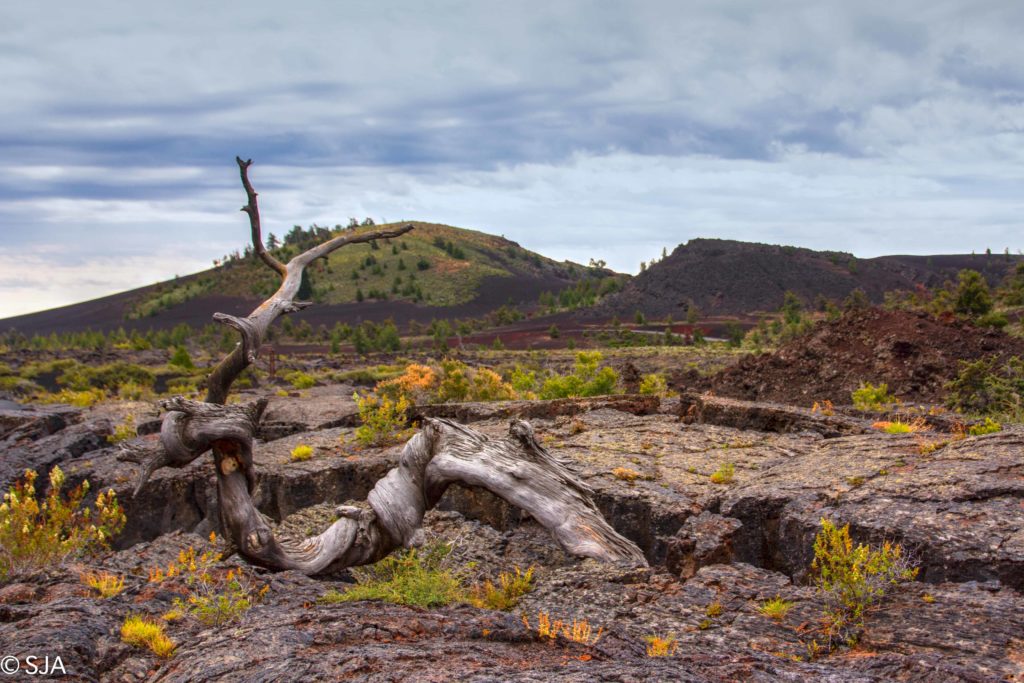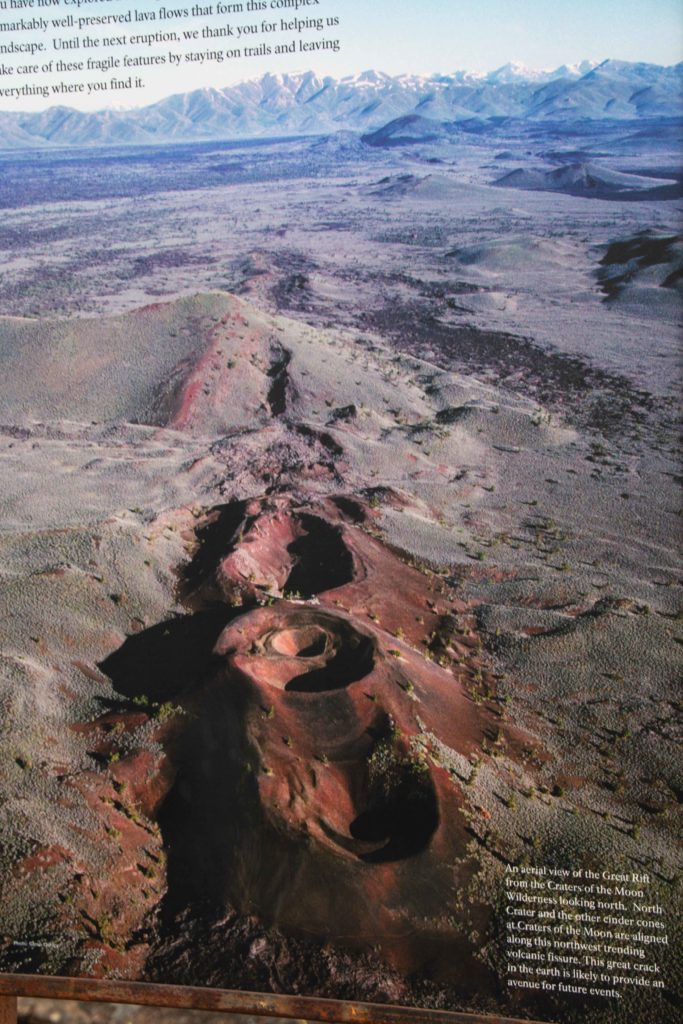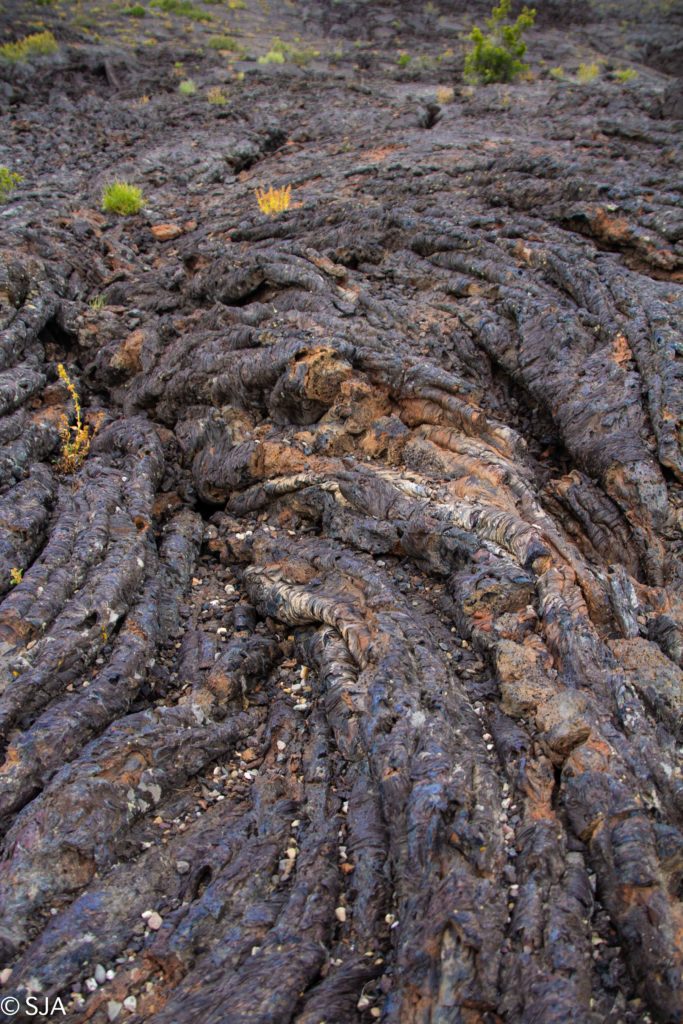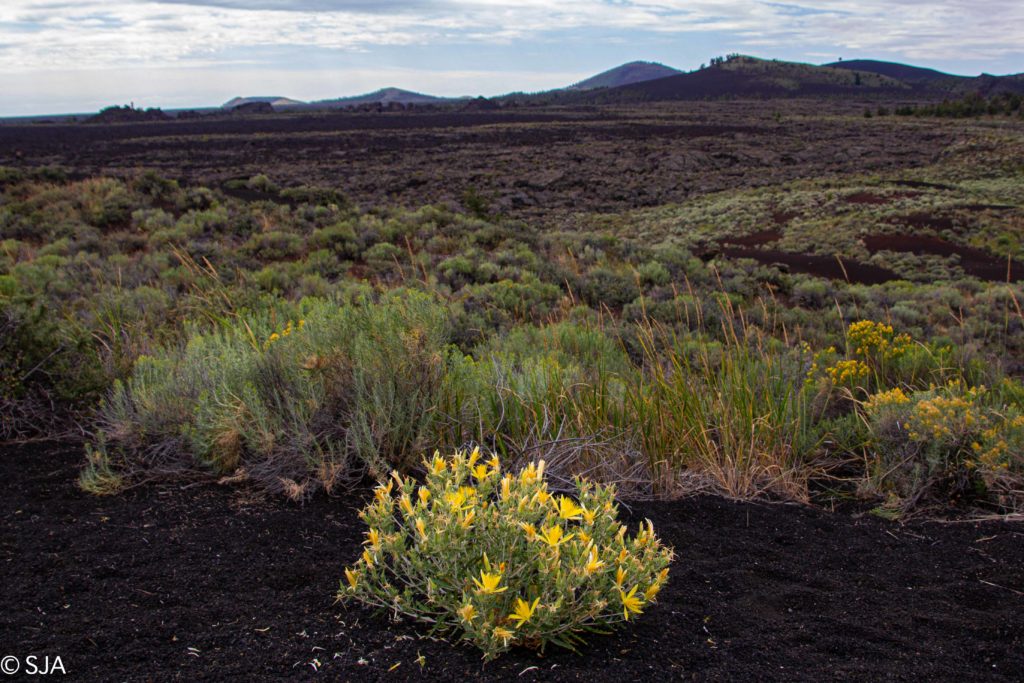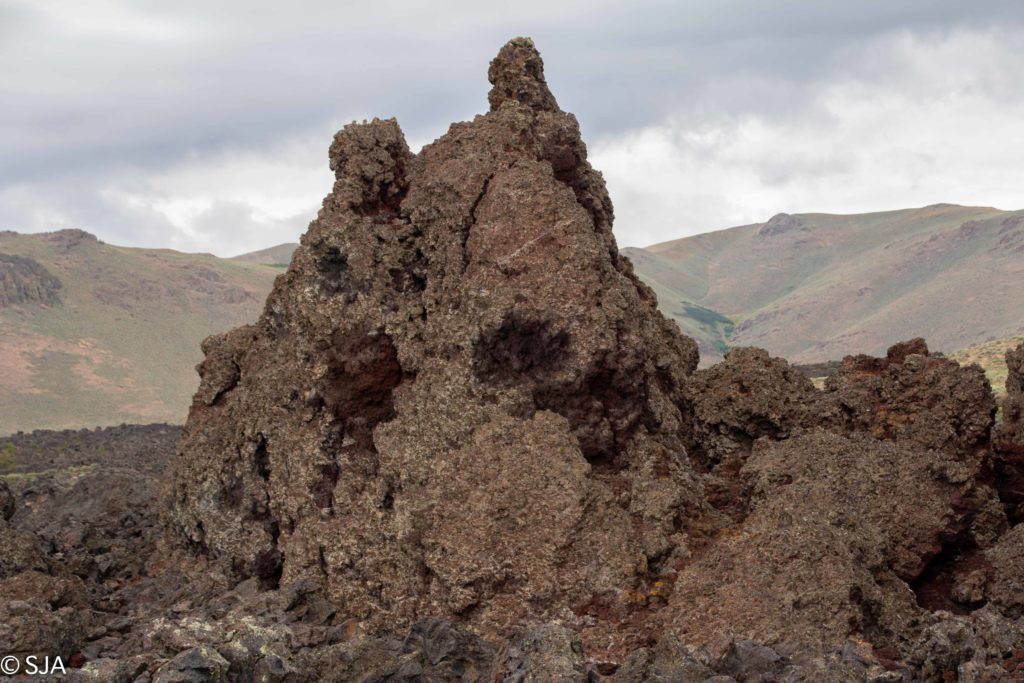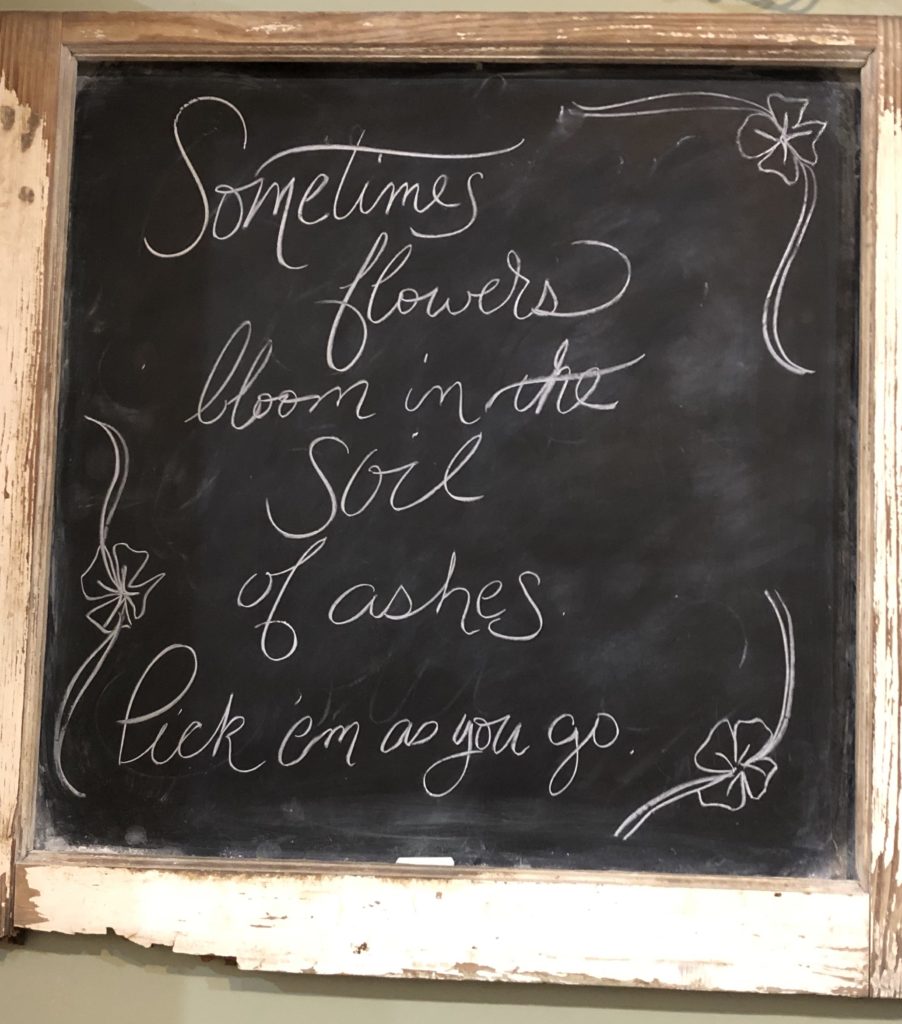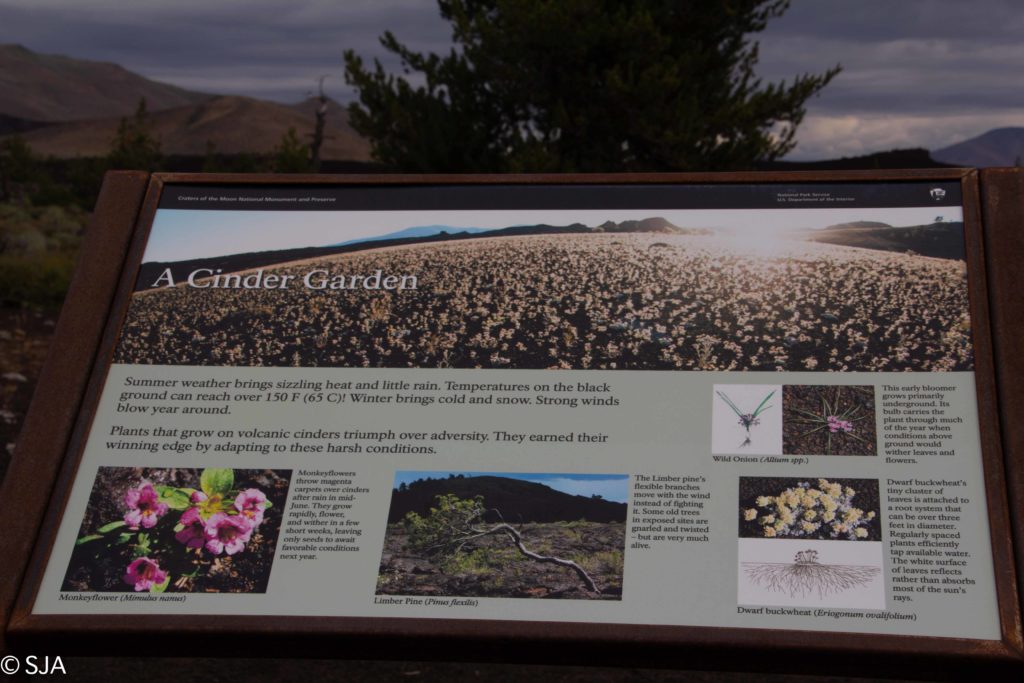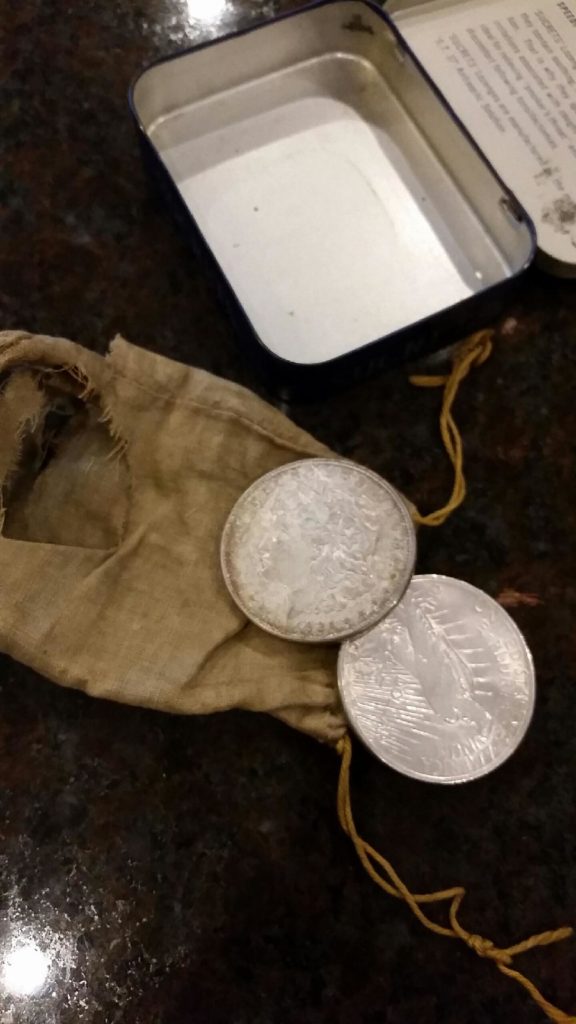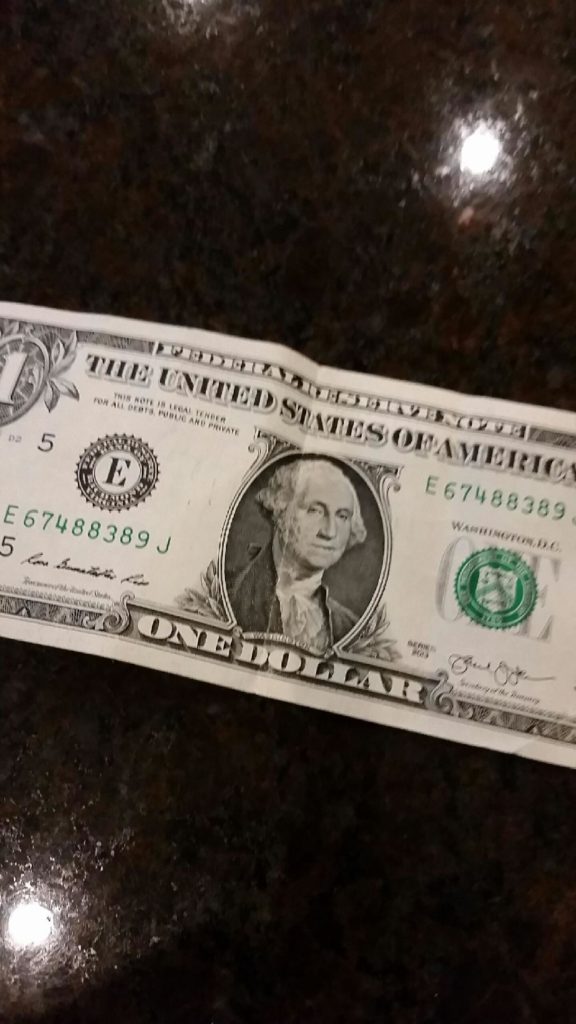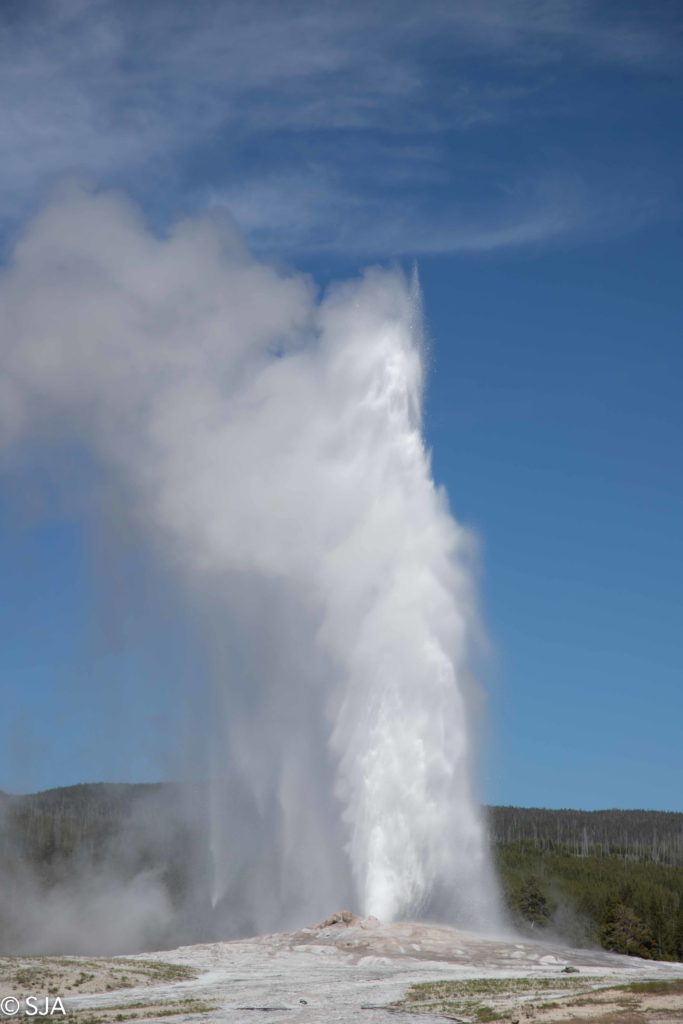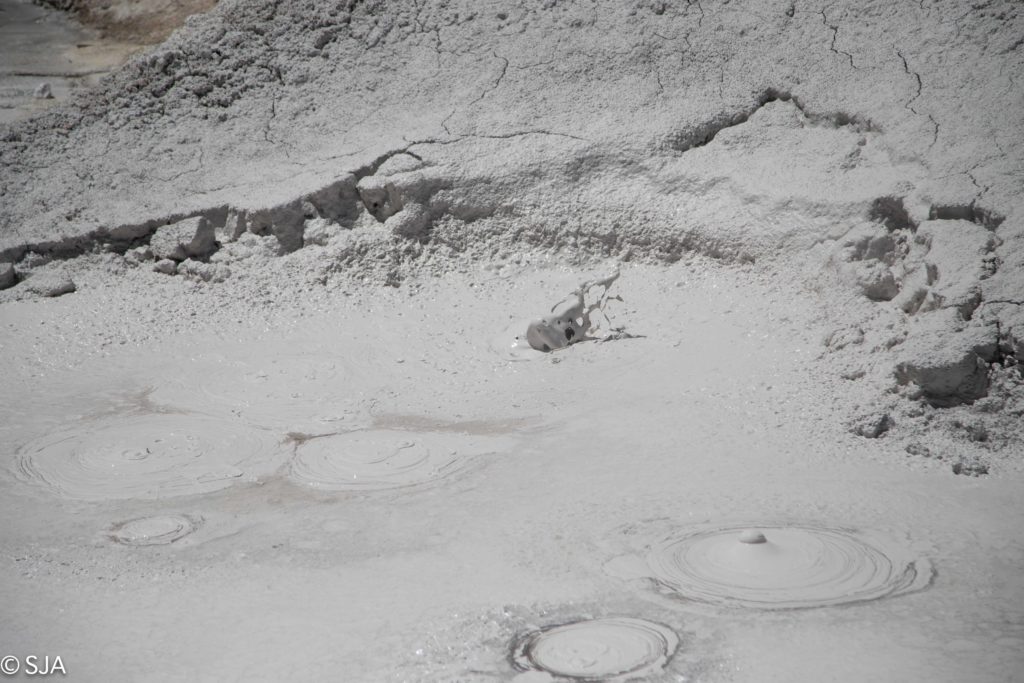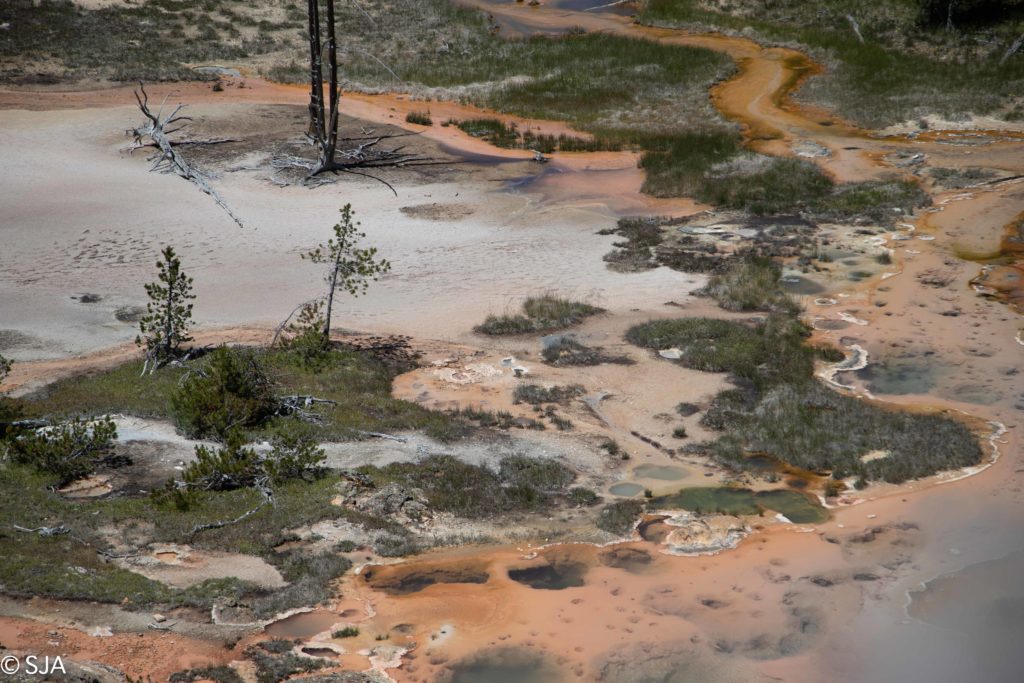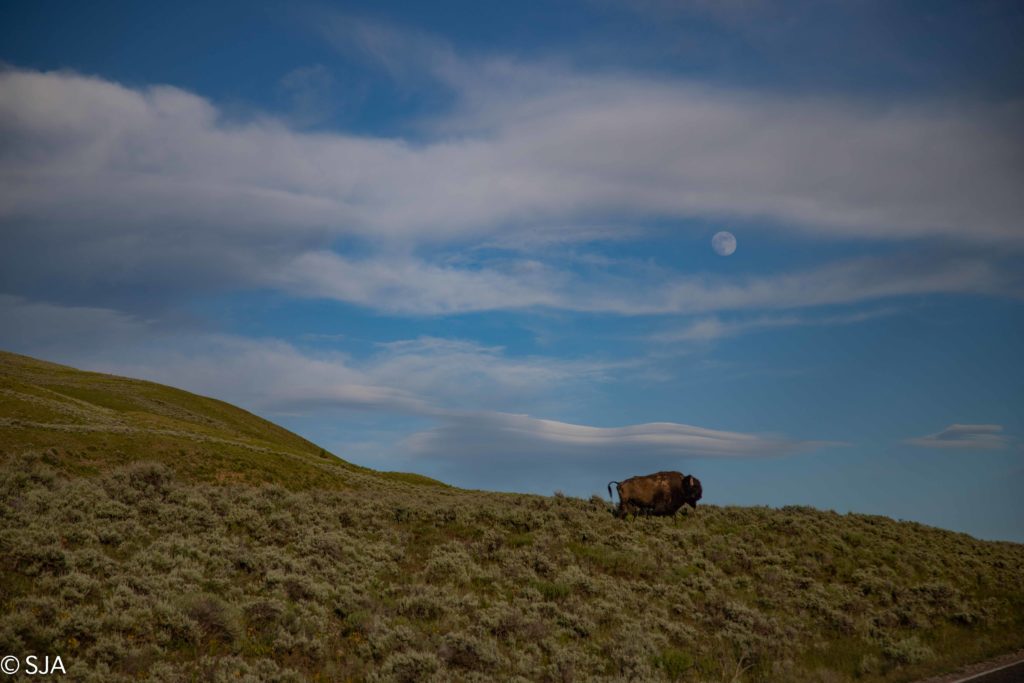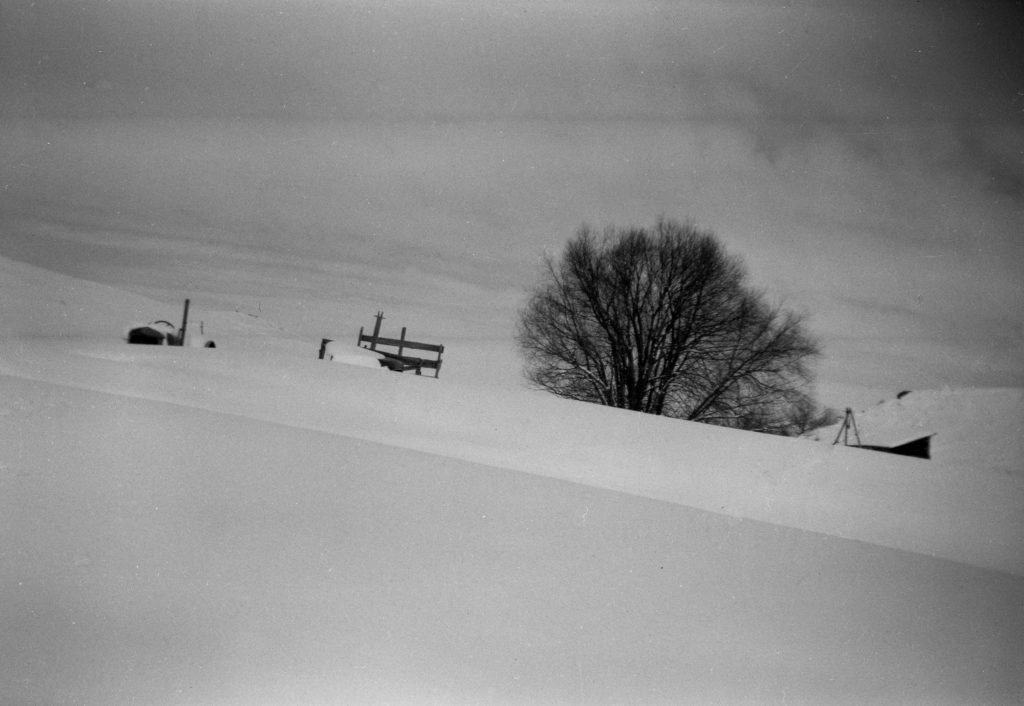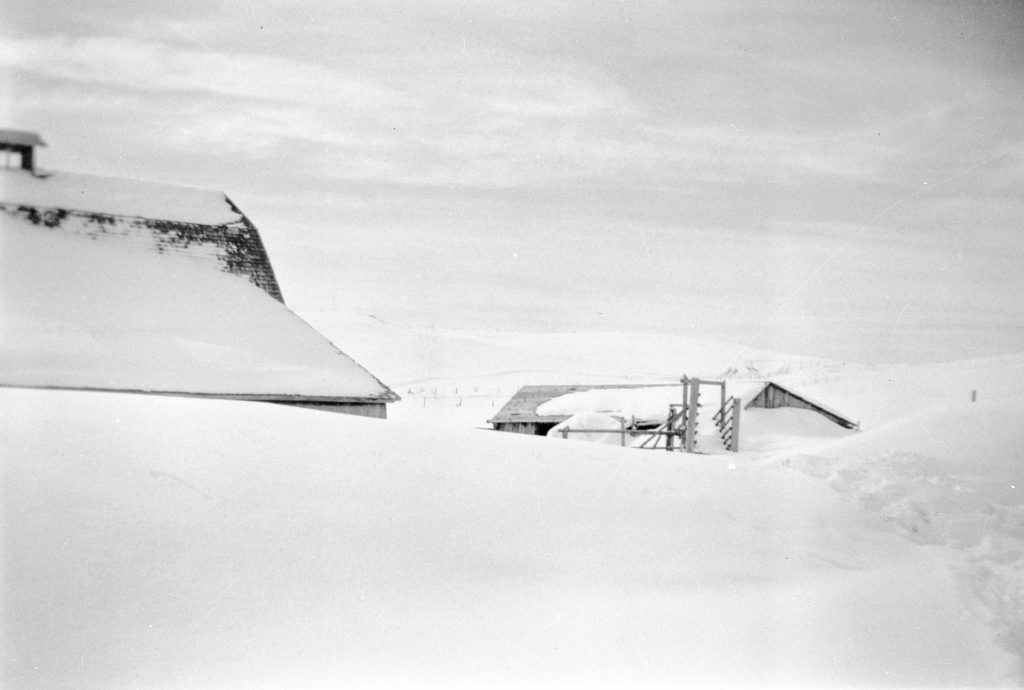Cross Country (Part Three)
Our first campsite in Texas was in Stephen Austin State Park. Some Hispanic families camped nearby. We gathered up enough players for a ball game. It’s a good thing we took our ball and gloves, huh? Later, we pulled out the guitar and sang around the fire. In the night, we were awakened to a rustling and scraping noise. We flashed our lights through the tent flap. There on the picnic table was a raccoon. We caught him in the act. Spaghetti sauce was on his mouth and his long-nailed claws held a handful of stringy spaghetti. He had popped the lid to the Tupperware bowl and helped himself. No leftovers tomorrow night! We also saw an armadillo, the first I’d ever seen, waddling by the edge of our campsite.
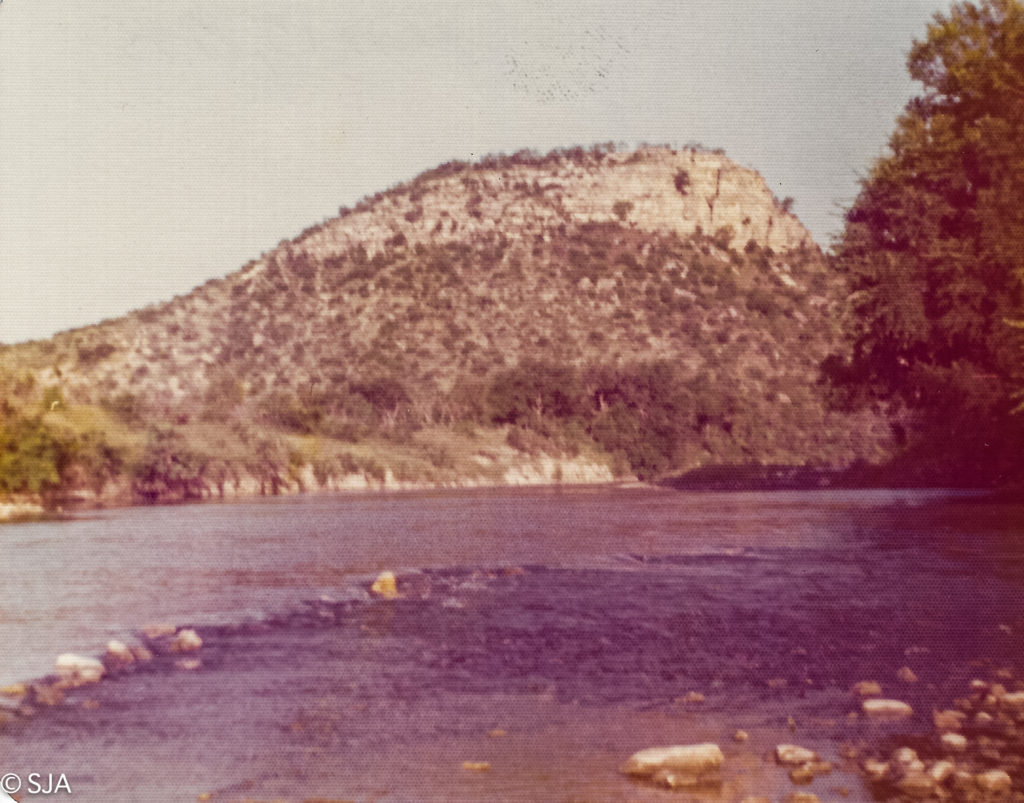
Junction, Texas campsite
The drive through the Texas’ arid, virtually treeless landscape was hot and dusty, and we were tired and dirty. We camped at Junction then made our way to Carlsbad, New Mexico. Hidden in the depths of the Guadalupe Mountains below the Chihuahun Desert along the Texas/New Mexico border are Carlsbad Caverns, the most famous of the 119 caves in the park. Below the surface are a series of 83 individual caves and a maze of stalactites and stalagmites. In the Big Room, at 750 feet, is the Underground Lunchroom built I 1928, two years before Carlsbad Caverns became a National Park. A new room, named Halloween Hall, was discovered in 2013 and was full of bat bones.
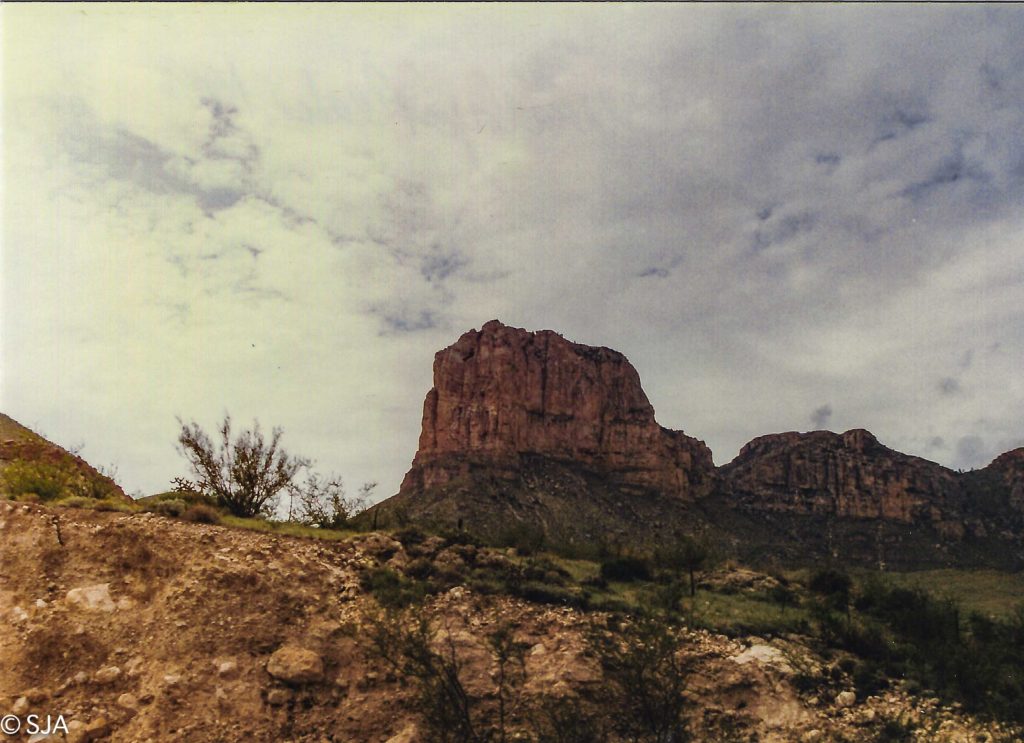
Guadalupe Mountains
We left the caverns and made a stop at Guadalupe Mountains National Park. We took a short hike up one of the trails and decided not to venture too far because the Park Ranger and all the posted signs gave scary warnings about all the rattlesnakes in that area. The Ranger said repeatedly, “This is rattlesnake country.” We imagined hearing rattles with every step. Besides, we wanted to make it to our campground in El Paso, Texas in a timely manner, so we drove on. After a hot, dusty day, and getting camp set up, we decided to just open a can of chili and heat it for our supper. We had to laugh when we read the side of the can, “Made in Augusta, Georgia.”
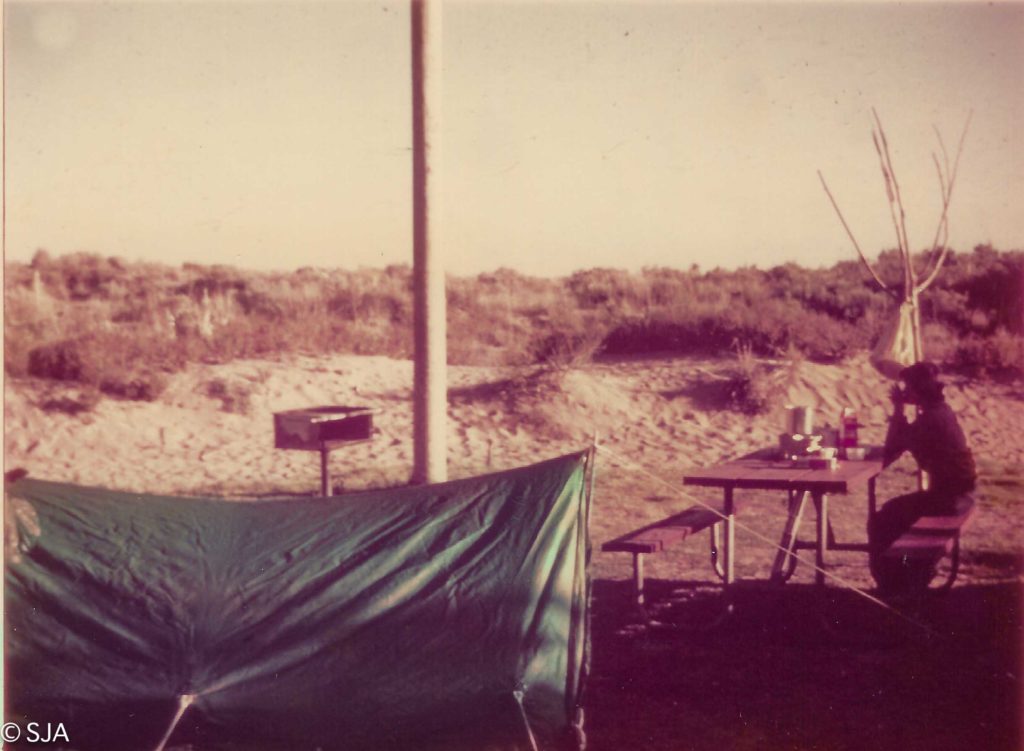
El Paso, Texas KOA, sister sitting at table eating chili from Augusta, GA
The landscape changed again as we neared Silver City, New Mexico and the Mimbres Mountains with their rugged unique beauty. We stayed in the KOA Campground at Silver City for two nights. This campground was one of only two places where we were unable to get our tent staked. Well, actually, we got the tent set up, but the wind was so fierce, it blew it down repeatedly. We did manage to bend a couple of the metal stakes. One of the campers who used the KOA as a summer home while mining for gems in the area saw our dilemma and offered us a place to stay. We accepted and didn’t have to worry about getting sand out of our teeth or blowing away.
Since we arrived in Silver City on the weekend, the library and County offices were closed. Our intention was to do some family research. At that time, our knowledge was somewhat limited as to specific areas in which our great grandparents had lived. We did a bit of exploring and made a trip to the Gila Cliff Dwellings that rise above the Gila River. It was fascinating to see how the Mogollon people lived and built their homes in the cliffs. We saw remnants of their life, such as the areas in which they ground grain for their food and fragments of pottery they made and used every day. The view was spectacular from their perch on the side of the cliffs.
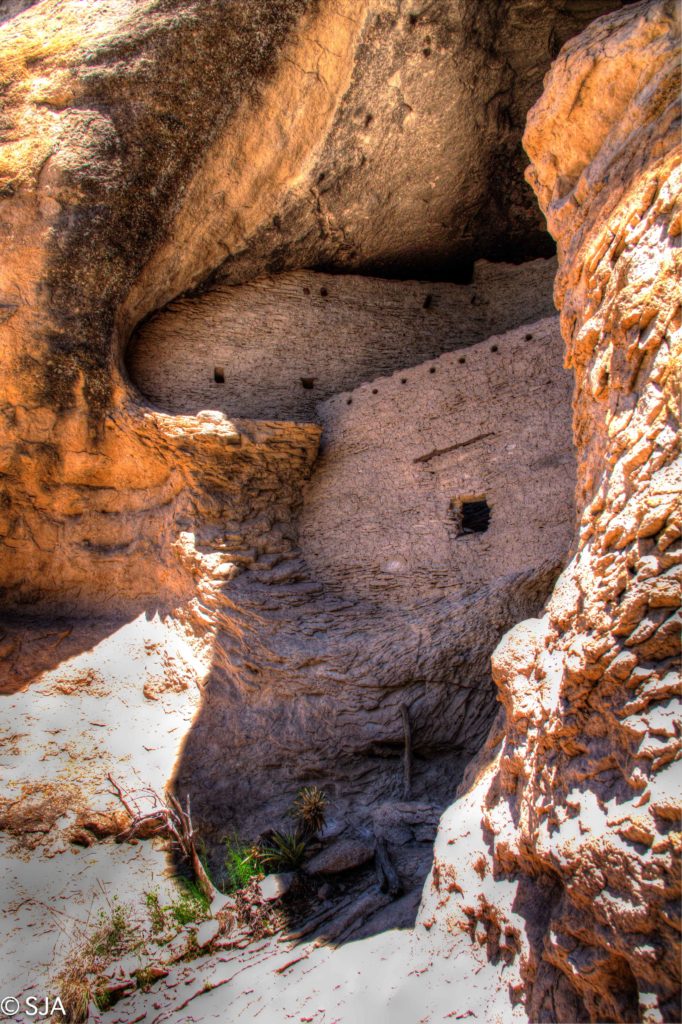
Gila Cliff Dwellings
As we left Silver City, our host gave us a hand drawn map with suggested stops off the “tourist trap” route. Because of that, we drove through Apache National Forest. I didn’t see many trees in the forest except for a few that were scrubby and twisted. We stopped at Tonto National Monument, at the edge of the Sonoran Desert in Arizona, and explored the two Salado Indian cliff dwellings. The desert country was filled with large Saguaro cacti and desert vegetation. The unexpected view from that vantage point looked across Roosevelt Lake with mountains in the background and a saddle shaped ridge lined with cacti in the foreground.
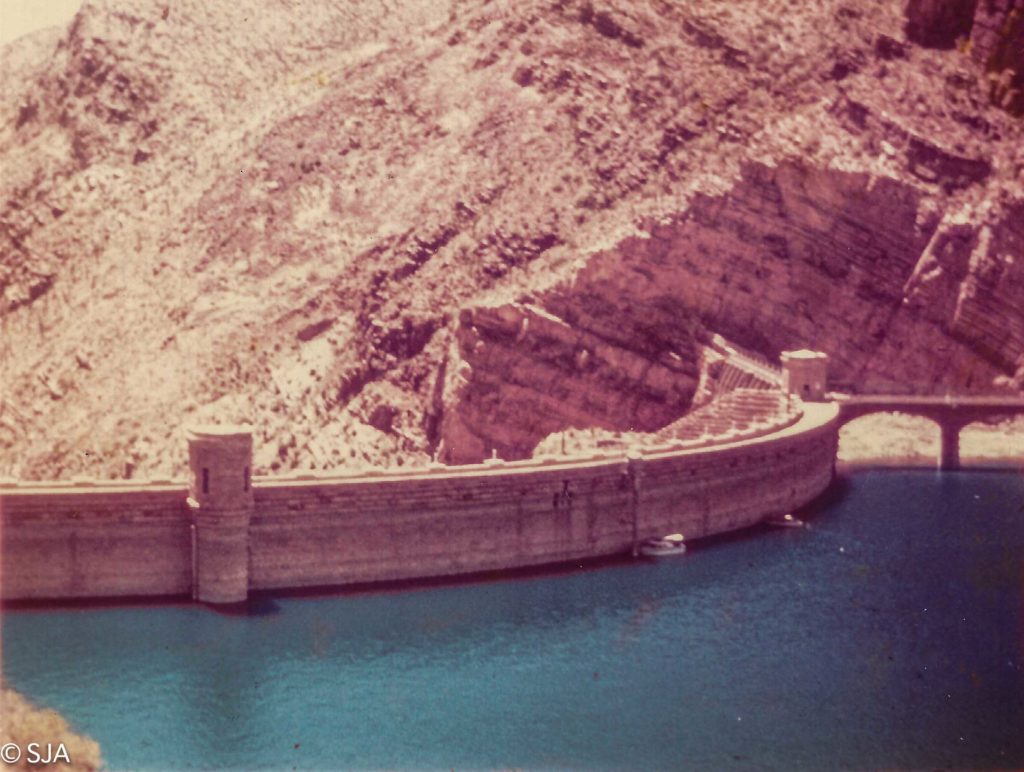
Roosevelt Dam
As we drove on from there, we went around a curve and there below us, Roosevelt Dam came into view. A note from history gives this description, “With a huge American flag draped over its parapets, President Theodore Roosevelt pressed a button that released a jet of water down the canyon from America’s newest Progressive-era technological marvel. The date was March 18, 1911, and a thousand onlookers witnessed this historic event, the likes of which the American West, or perhaps America at large, had never seen—the dedication of the world’s highest, stone masonry, gravity dam.” The whole scene was gorgeous with piercing blue Roosevelt Lake as the backdrop. As we drove further, we found the tourists and locals enjoying the lake as well with boating, skiing, and picnicking.
As we continued our westward adventure taking our dry flaky skin with us, the lake got smaller in the rear-view mirror. The first order of business was to buy some lotion at our next stop.
